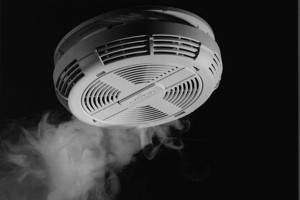
From 1 July 2016, a law change means that all residential rental properties will be required to have operational smoke alarms. Failure to comply with the new laws can result in a maximum penalty of $3,000.
Where must smoke alarms be installed?
At least one smoke alarm must be located:
- within 3 metres of each bedroom door
- on each level of a multi-storey household unit
- in a self-contained caravan, sleep out or similar.
Who is responsible?
Under the new legislation, the landlord will be responsible for ensuring there is at least one operational smoke alarm in a rental property at the start of each new tenancy, but the tenant will be responsible for replacing batteries (if required) during their tenancy. (This differs from the current situation in which landlords are responsible for replacing batteries where smoke alarms have been installed.)
We understand also, that the current intent of the new legislation has the tenant responsible for testing and cleaning the alarm during the course of the tenancy.
Type of smoke alarm
Smoke alarms that are installed after 1 July 2016 must be long life, photoelectric smoke alarms. Long life photoelectric smoke alarms are more expensive (prices currently range between approximately $30-$55) but the purchase price is offset by the fact that they do not have batteries that need replacing. Long life smoke alarms will last for approximately 10 years. Hard wired smoke alarms may also be installed. Where existing smoke alarms are already installed, they may remain but when they need to be replaced, long life photoelectric smoke alarms must be installed. Long life smoke alarms are already recommended by the NZ Fire service.
Testing smoke alarm
Smoke alarms should be tested once a month by pressing the test button (a broom handle can be used for this if it is out of reach). If the alarm is working, there will be a loud beep or a series of beeps. If there is no sound, the batteries must be replaced, or if a long-life alarm, the alarm itself must be replaced. When the battery is getting low, the alarm will "chirp" every minute or so to give warning that it is about to stop working. Again, the battery or the alarm must be replaced. Tenants must not render a smoke alarm inoperative either by removing the battery or damaging it in any way. The maximum fine for damaging or destroying a smoke alarm is $3,000.
Cleaning smoke alarm
Smoke alarms should be cleaned regularly to remove dust which can interfere with the alarm’s operation. Regardless of the type of alarm, it should be vacuumed using a soft brush attachment or wiped with a dry cloth. Refer to the manufacturer’s instructions for cleaning frequency but they should generally be cleaned every six months. Do not use a damp cloth to clean a smoke alarm.
More information about smoke alarms
If you would like to learn more about smoke alarms, the NZ Fire Service has produced an excellent video. A working smoke alarm is your only voice
The MBIE website also has a lot of information about smoke alarms. Smoke alarms: What you need to know about the new regulations
